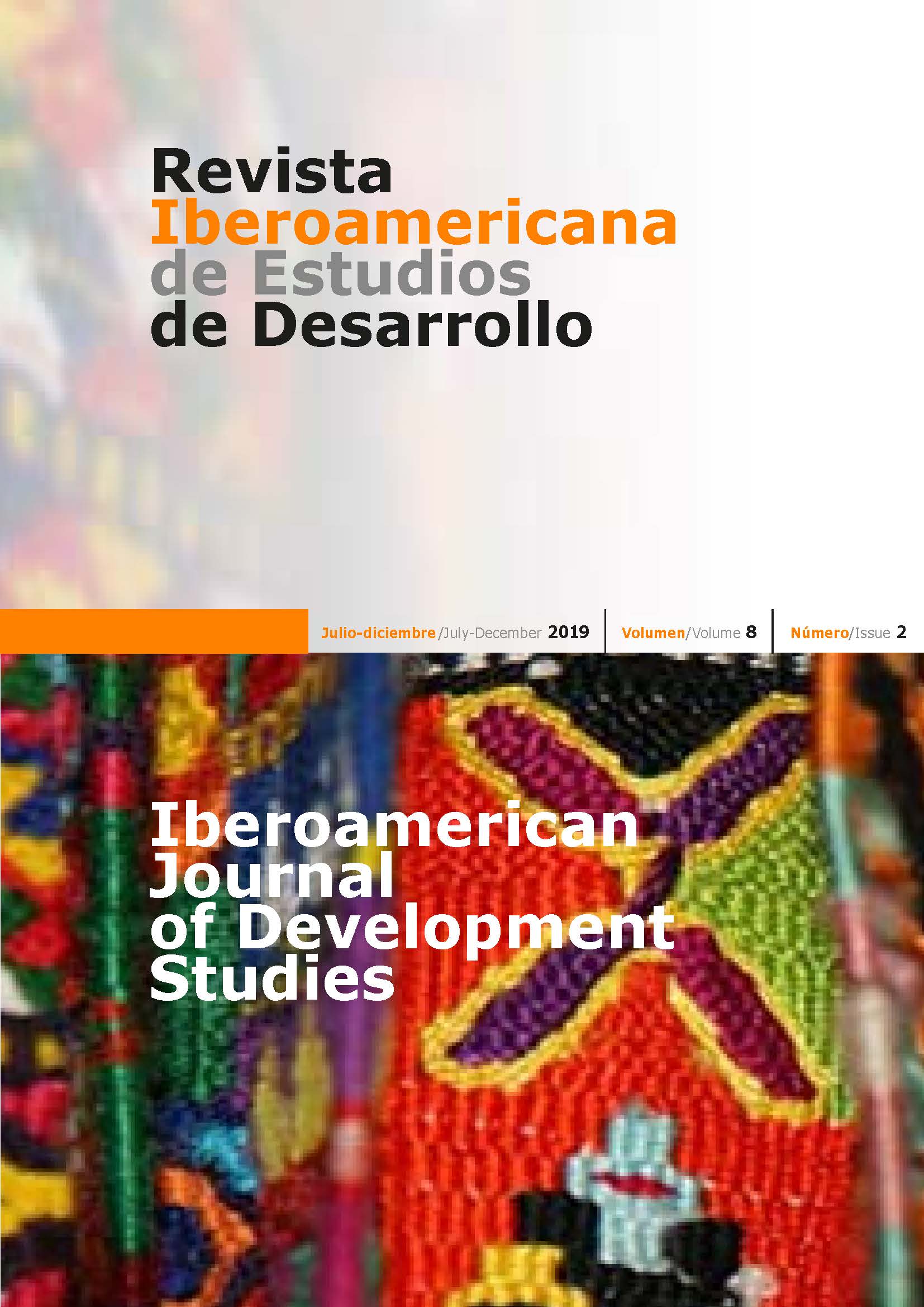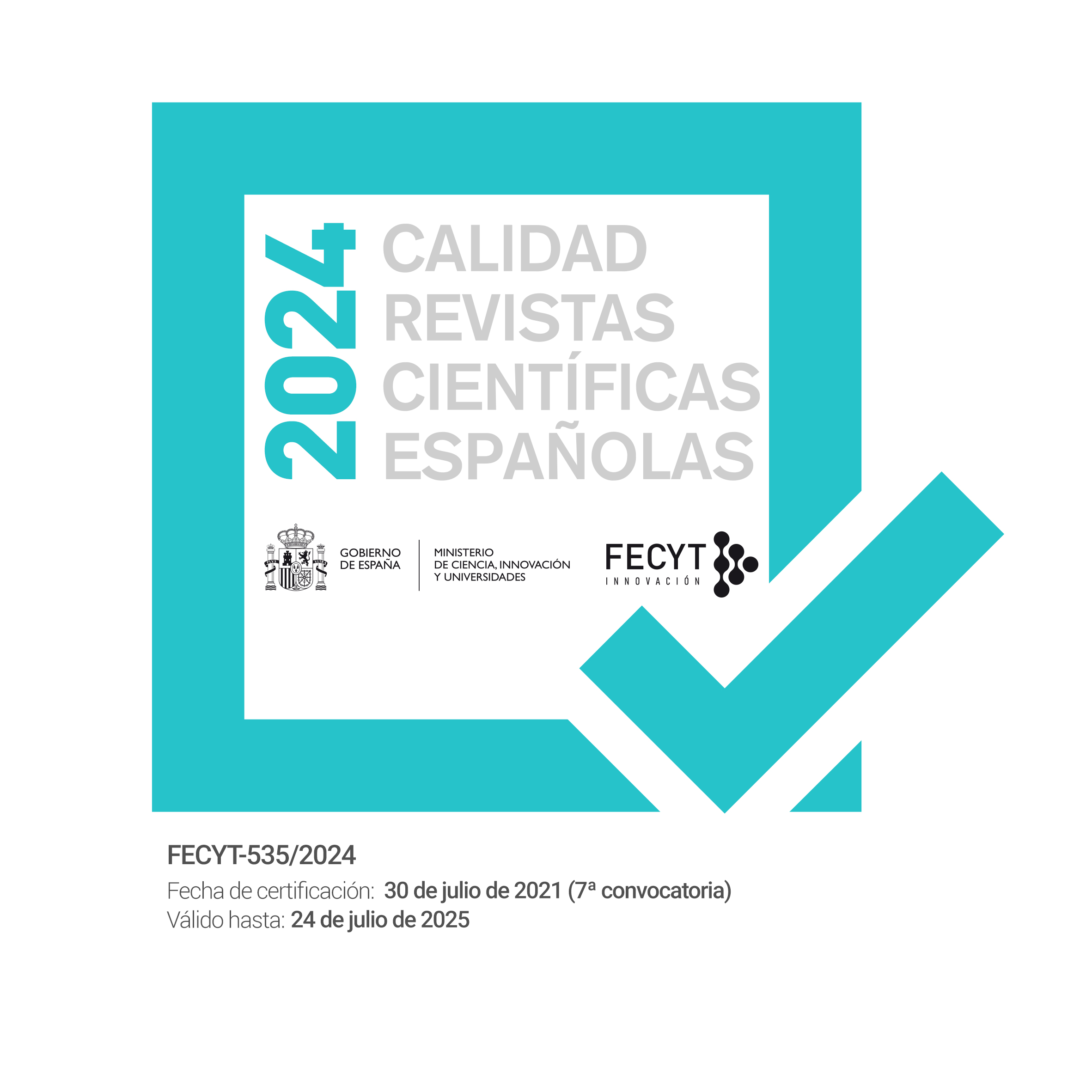The relationship between corruption and inequality in Colombia: empirical evidence using panel data for the period 2008-2017
DOI:
https://doi.org/10.26754/ojs_ried/ijds.359Palabras clave:
corrupción, GINI, desigualdad, cointegraciónResumen
En este documento, utilizamos datos anuales de 2008 a 2017 para 24 departamentos de Colombia, incluida Bogotá DC, para estudiar las relaciones entre la corrupción y la desigualdad. Los resultados econométricos obtenidos con la metodología Pedroni (1995, 2001) indican una correlación positiva entre la corrupción y el GINI. Este resultado coincide con los hallazgos de varios autores que argumentan que los aumentos en el nivel de fraude o la baja calidad institucional ofrecen una mayor desigualdad en la clase social. Por otro lado, existe una relación positiva y estadísticamente significativa entre el GINI, el desempleo, la informalidad y el PIB per cápita, mientras que la educación posee un impacto negativo en la desigualdad de ingresos.
Descargas
Citas
ALESINA AF, ANGELETOS G (2005). Fairness and Redistribution: US versus Europe. SSRN Electronic Journal 37(2):1-41.
ANAND S, KANBUR S (1993). The Kuznets process and the inequality development relationship. Journal of Development Economics 40(249):25-52.
ANDRES A, RAMLOGAN-DOBSON C (2011). Is corruption really bad for inequality? Evidence from Latin America. Journal of Development Studies 47(7): 959-976.
APERGIS N, DINCER OC, PAYNE JE (2010). The relationship between corruption and income inequality in U.S. states: Evidence from a panel cointegration and error correction model. Public Choice 145(1).
ARIELY G, USLANER EM (2017). Corruption, fairness, and inequality. International Political Science Review 38(3):349-362.
ATKINSON A (1970). On the measurement of inequality. Journal of Economic Theory 2(3):244-263.
BANERJEE A (1999). Panel data unit roots and cointegration: an overview. Oxford Bulletin of economics and Statistics 61(S1):607-629.
BANERJEE AK (2014). A multidimensional Lorenz dominance relation. Social Choice and Welfare 42(1).
BLACKBURN K, BOSE N, HAQUE ME (2006). The Incidence and Persistence of Corruption in Economic Development. Centre for Growth & Business Cycle Research, pp. 1-22.
CANO LP (2014). La corrupción y la ineficiencia en el gasto público local y su impacto en la pobreza en Colombia. Coyuntura Económica: Investigación Económica y Social, XLIV(1):121-172.
CARDONA L, GÓMEZ C, DUQUE JF (2016). ¿Costumbre o reacción? El efecto de ser víctima de delitos y corrupción en la satisfacción con la vida de los colombianos. Documentos de Trabajo: Universidad EAFIT (16).
CHONG A, CALDERÓN C (2000). Institutional quality and income distribution. Economic Development and Cultural Change 48(4).
CHONG A, GRADSTEIN M (2007). Inequality and institutions. Review of Economics and Statistics 89(3).
DASGUPTA P, SEN A, STARRETT D (1973). Notes on the measurement of inequality. Journal of Economic Theory, 6:180-187.
DINCER O, GUNALP B (2008). Corruption, income inequality, and poverty in the United States. Working Paper:1-39.
DOBSON S, RAMLOGAN-DOBSON C (2012). Why is corruption less harmful to income inequality in Latin America? World Development 40(8):1534-1545.
FAKIR AMS, AHMAD AU, HOSAIN KMM, HOSSAIN MR, GANI RS (2017). The comparative effect of corruption and Piketty’s second fundamental law of capitalism on inequality. Economic Analysis and Policy, 55:90-105.
FERREIRA F, PERAGINE V (2015). Equality of opportunity: Theory and evidence. Handbook of Well Being and Public Policy.
GARAY LJ (2003). En torno a la economía política de la exclusión social en Colombia. Revista de Economía Institucional 5(8):15-31,
GRADÍN C, RÍO C del (2001). La medición de la desigualdad. Universidad de Vigo. http://ctinobar.webs.ull.es/1docencia/DESIGUALDAD SOCIAL/VIGO.pdf , accessed September 10, 2017.
GUPTA S, DAVOODI H, ALONSO-TERME R (2002). Does corruption affect income inequality and poverty? Economics of Governance 3(1):23-45.
GYIMAH-BREMPONG K, MUNOZ S (2006). Corruption, growth, and income distribution inequality in Africa. Economics of Governance 7(3):245-269.
HEIDENHEIMER A, JOHNSTON M, LE VINE VT (1989). Political corruption: a handbook. Political Science. New Brunswick, NJ: Transaction Publishers.
JIMÉNEZ JP (2015). Desigualdad, concentración del ingreso y tributación sobre las altas rentas en América Latina. CEPAL, Santiago de Chile.
KOLM S-C (1976). Unequal inequalities. I. Journal of Economic Theory 12(3): 416-442.
KUZNETS S, JENKS E (1953). Shares of upper income groups in savings, vol. I.
LANGBEIN L, SANABRIA P (2013). The Shape of Corruption: Colombia as a Case Study. Journal of Development Studies 49(11):1500-1513.
LI H, XU LC, ZOU H-F (2000). Corruption, income distribution, and growth. Economics and Politics 12(2).
LYON M, CHEUNG LC, GASTWIRTH JL (2016). The Advantages of Using Group Means in Estimating the Lorenz Curve and Gini Index From Grouped Data. American Statistician 70(1).
MEDINA F (2001). Consideraciones sobre el índice de gini para medir la concentración del ingreso. Serie Estudios Estadísticos y Prospectivos 9(CEPAL):343-373.
MODALSLI J (2015). Inequality in the very long run: inferring inequality from data on social groups. Journal of Economic Inequality 13(2).
OURTI TV, CLARKE P (2011). A simple correction to remove the bias of the GINI coefficient due to grouping. Review of Economics and Statistics 93(3).
PEDAUGA LE, PEDAUGA LD, DELGADO-MÁRQUEZ BL (2017). Relationships between corruption, political orientation, and income inequality: evidence from Latin America. Applied Economics 49(17):1-32.
PEDRONI P (1995). Panel Cointegration; Asymptotic And Finite Sample Propierties Of Pooled Time Series Tests With An Application To The PPP Hypothesis. Econometric Theory 20(3):597-625.
PEDRONI P (2001). Fully Modified OLS for Heterogeneous Cointegrated Panels. Nonstationary Panels, Panel Cointegration, and Dynamic Panel, pp. 93-130.
PÉREZ T, DA SILVA G (2015). Corrupción en la función pública: un estudio sobre las correlaciones entre corrupción, calidad de la democracia, gobernanza, desigualdad de renta y desempleo en el mundo (2008-2012). Revista Colombiana de Ciencias Sociales, 6(1):15-33.
PHILLIPS PC, HANSEN BE (1990). Statistical inference in instrumental variables regression with I (1) processes. The Review of Economic Studies 57(1):99-125.
REVÉIZ E (2016). La transgresión moral de las élites y el sometimiento de los estados. ACCE, Bogotá.
RIBÓN S de G (2015). Incidencia del Gasto Público Social en el Índice de Desarrollo Humano ajustado por la Desigualdad en Colombia 2000- 2013. Universidad de La Salle, pp. 1-49.
ROTHSTEIN B, USLANER EM (2005). All for all: Equality, corruption, and social trust. World Politics 58(1).
SEN A (1973). On Economic Inequality. Oxford University Press.
TANZI V (1998). Corruption Around the World: Causes, Consequences, Scope, and Cures. IMF Staff Papers, vol. 45).
TILLÉ Y, LANGEL M (2012). Histogram-based interpolation of the Lorenz curve and Gini index for grouped data. American Statistician 66(4).
WARF B (2016). Global geographies of corruption. GeoJournal 81(5):657-669.
WONG MY (2016). Public spending, corruption, and income inequality: A comparative analysis of Asia and Latin America. International Political Science Review (2008):1-18.
YITZHAKI S, SCHECHTMAN E (2005). The properties of the extended Gini measures of variability and inequality. Metron 63(3).
YOU J-S, KHAGRAM S (2005). A comparative study of inequality and corruption. American Sociological Review 70(1).
Descargas
Publicado
Cómo citar
Número
Sección
Licencia
Derechos de autor 2019 Jorge Enrique Sáenz-Castro, Juan David García-González

Esta obra está bajo una licencia internacional Creative Commons Atribución-NoComercial-SinDerivadas 4.0.






